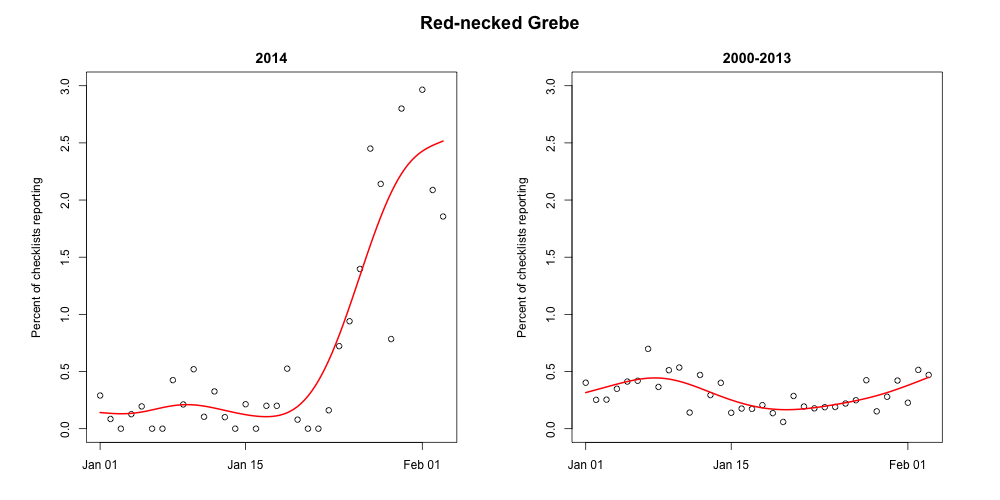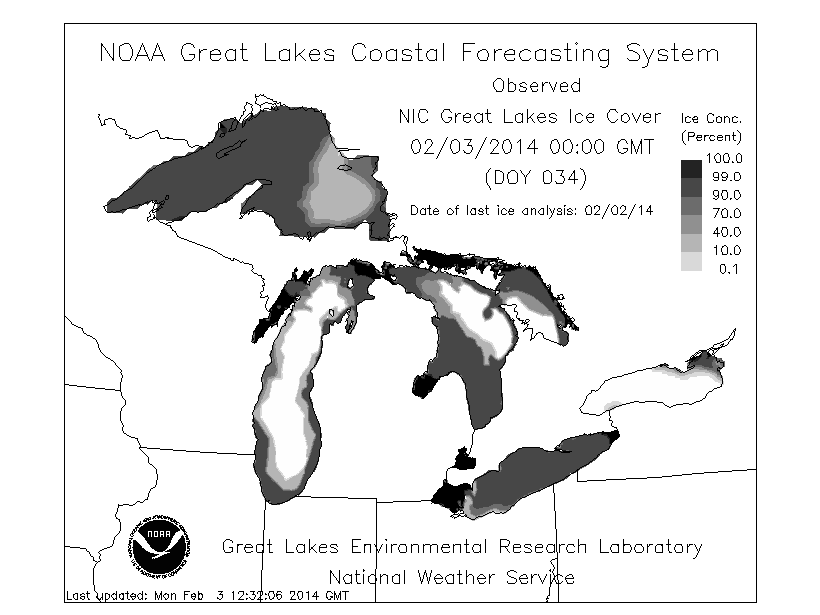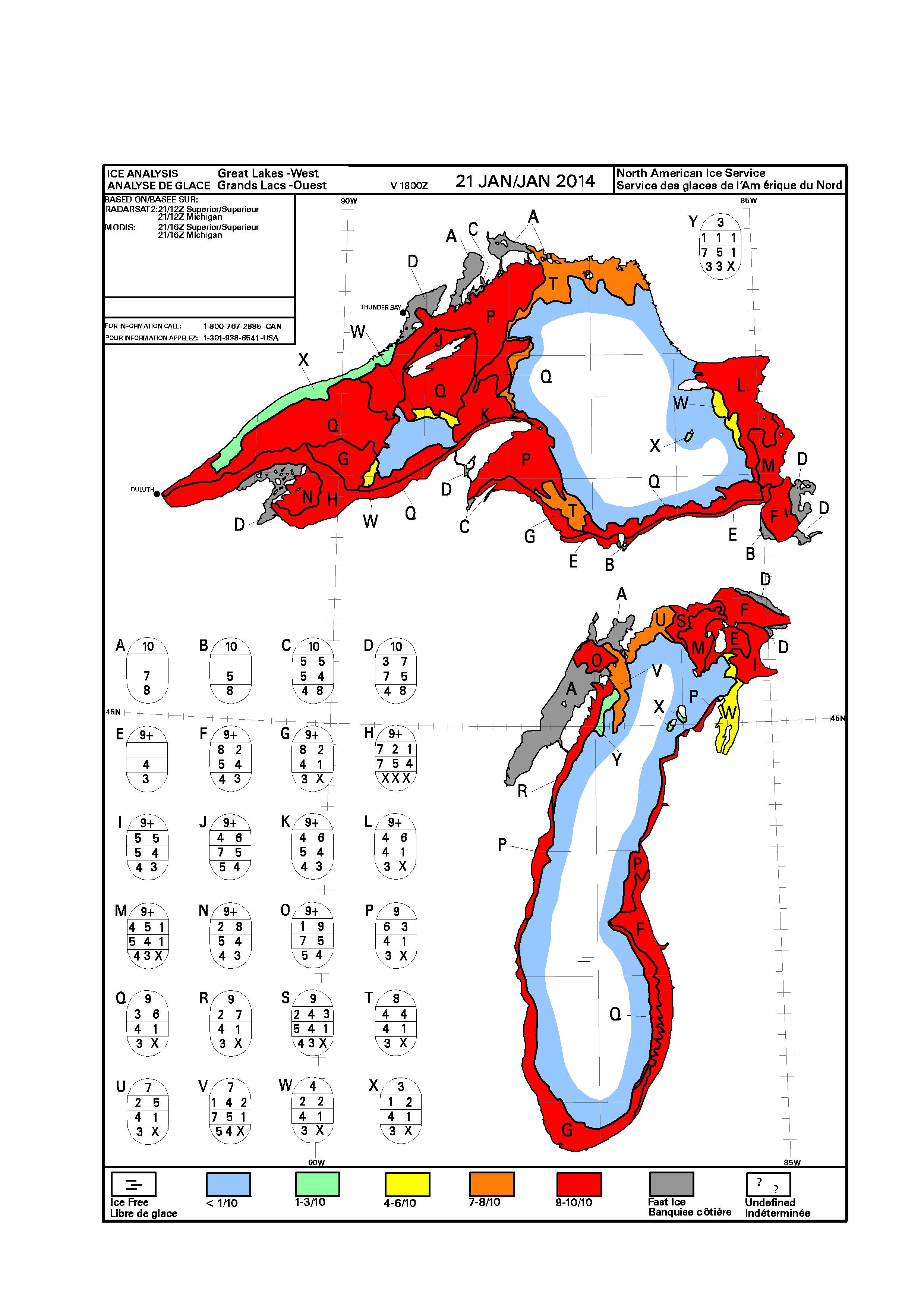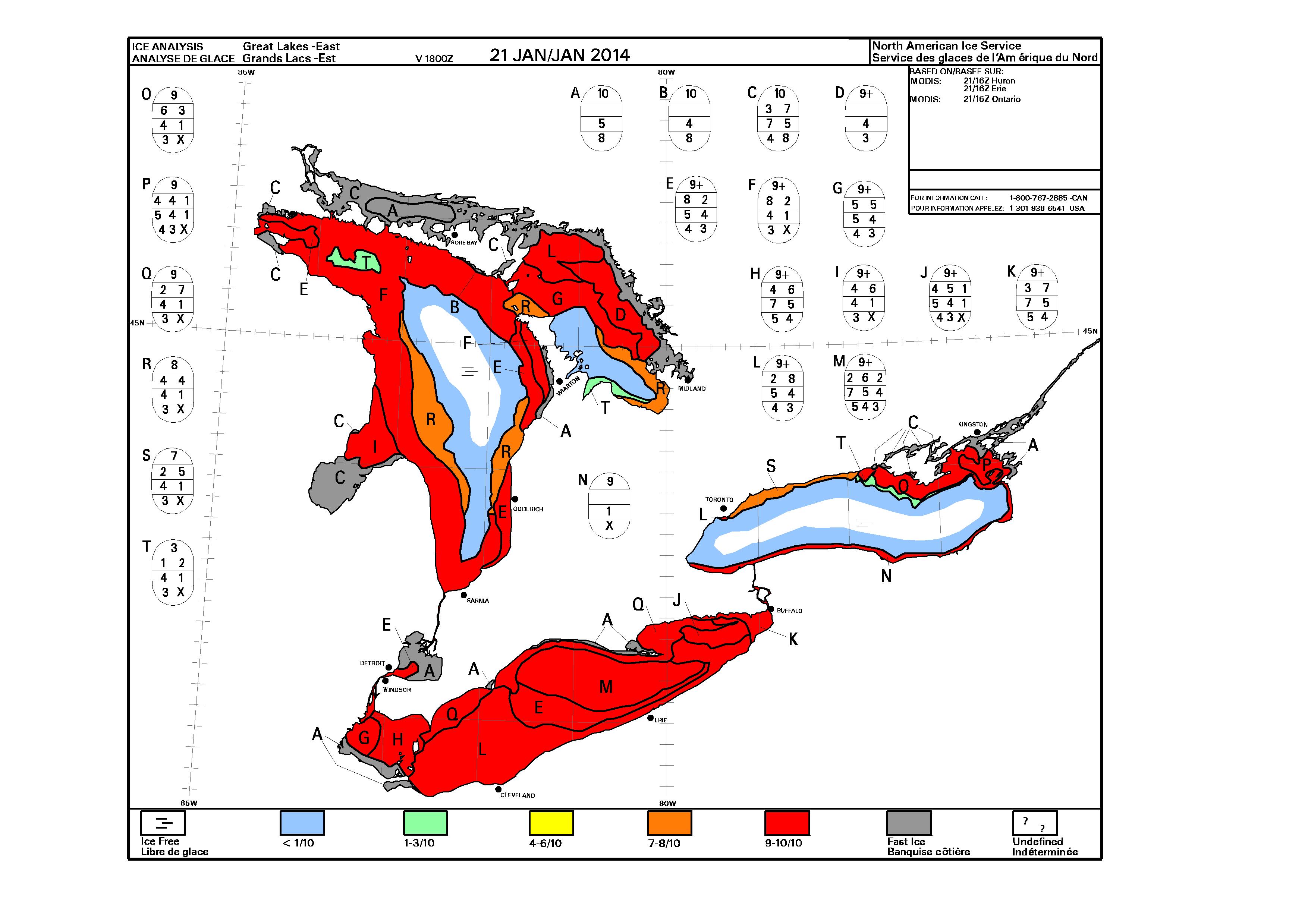Late last week Teams BirdCast and eBird posted a story about some recent winter movements. Here, we decided to look a bit more closely at what seemed to be some rather drastic departures this winter in the patterns of distributions of two species: White-winged Scoter and Red-necked Grebe. We focused our efforts on eBird data submitted for the month of January in the 2000-2014 period from New York, New Jersey, Pennsylvania, Maryland, and Delaware. The data show some intriguing patterns. The figures below were created by BirdCaster Benjamin Van Doren, showing daily changes in the percentage of complete checklists in the given region that report White-winged Scoter and Red-necked Grebe. The right graph plots the January 2000-2013 daily patterns of changes in percentage of complete checklists reporting the species as well as a smoothed trend line, and the left graph plots the January 2014 pattern. Notice that, for both species, the 2014 data show striking differences in the numbers of checklists in this region reporting these two species in the last 10 days of January and into early February.

Red-necked Grebes have been reported on a relatively small number of checklists in the month of January 2000-2013. But January 2014 shows a drastic departure from this pattern. From MD, PA, DE, NY, and NJ.

White-winged Scoters have also been reported on a relatively small number of checklists in the month of January 2000-2013. But January 2014 shows a drastic departure from this pattern. From MD, PA, DE, NY, and NJ.
There are presumably several possible causes for these patterns, a couple of which we posited last week. An intriguing correlation, and one that presumably has much bearing on these patterns, is the percentage of ice cover on the Great Lakes. Jeff Masters posted an excellent account (and several of our friends have highlighted this, thank you!) of how drastic is this year’s cover relative to the coverage in the last 20 years. A quick look at the present day’s coverage continues to support what that blog post suggested: there is extensive ice cover on the Great Lakes:
 A look back at the imagery for January 20 shows this coverage was equally extensive around the timing of the increase in the scoter and grebe reports. The correlation is striking and certainly worthy of additional investigation. A great resource for looking at archived imagery of the extent of this ice is here: of particular note, try looking at the imagery for 1 January 2014 and see how striking are the differences between the beginning of the year and the present!
A look back at the imagery for January 20 shows this coverage was equally extensive around the timing of the increase in the scoter and grebe reports. The correlation is striking and certainly worthy of additional investigation. A great resource for looking at archived imagery of the extent of this ice is here: of particular note, try looking at the imagery for 1 January 2014 and see how striking are the differences between the beginning of the year and the present!

 We will continue to post on this topic and provide updates on this unfolding story, so please check back to see what’s new! And of course, please keep submitting your observations to eBird!
We will continue to post on this topic and provide updates on this unfolding story, so please check back to see what’s new! And of course, please keep submitting your observations to eBird!
Update: 4 February 2014
Several of our friends have commented about some similarities between this winter’s Red-necked Grebe movements and previous years’ movements. Below we include some excerpts from Matthew Medler regarding the Finger Lakes Region (NY) movements in February and March 2003:
Subject: Red-necked Grebe irruption?
Date: Thu, 27 Feb 2003 16:06:11 -0500
Reply-To: CAYUGABIRDS-L@cornell.edu
With the extremely cold weather that we have been having this winter, combined with a number of Red-necked Grebe sightings in the past two weeks, I have been thinking recently about the possibility that we will see a Red-necked Grebe irruption this winter, and I recently wrote an article about this topic for the Cayuga Bird Club newsletter (an article which I hope will be posted to the Cayuga Bird Club newsletter at some point). It turns out that on very rare occasions during the last (20th) century, Red-necked Grebes appeared in large numbers in late winter in places where
they are not typically seen during the winter, or in big numbers. The winter of 1994 was one of those years–the new Bull’s Birds of New York species account for R-n Grebe (written by Basin legend Ned Brinkley) lists an astonishing 105 R-n Grebes on Cayuga Lake on February 20, 1994, and
later that same winter, more than 100 birds were seen on nearby Seneca Lake. Although the complete wintering grounds of this species are not fully known, there is speculation that large numbers might winter somewhere in the center of one of the northern Great Lakes. During extremely cold winters, when even the biggest Great Lakes freeze over, any grebes wintering on them get forced off to other bodies of water. Since Cayuga Lake and Seneca Lake are so deep, they almost never freeze over, so they are obvious places for displaced grebes to find refuge.
Furthermore, he posted:
Subject: Red-necked Grebe total
Date: Sat, 01 Mar 2003 19:35:26 -0500
Reply-To: CAYUGABIRDS-L@cornell.edu
Mike Andersen and I headed up the east side of Cayuga Lake late this afternoon in an attempt to count the birds on the northeast part of the lake. We started our “official” counting at the Milliken Station/AES Cayuga power station, well north of Myers, where we saw four Red-necked Grebes. We then headed to the Long Point State Park area, where we tallied 20 R-n Grebes in the area from the south of Long Point until the bluffs south of Aurora Bay. Then, from the Wells College Boathouse, we added another four Red-necked Grebes to our total, bringing it to 28 Red-necked Grebes. During our time on the lake, we didn’t see a single Red-necked Grebe in flight (suggesting that the birds aren’t moving, so it seems fair to me to add totals from different observers who covered different parts of the lake today (even at different times) in order to arrive at a conservative estimate of the total number of Red-necked Grebes on Cayuga Lake:
170 from Stewart Park to Myers Point (Tim Lenz)
28 from AES Cayuga power station (north Lansing) to Wells College Boathouse in Aurora (Mike Andersen and Matt Medler)
29 from Sheldrake to Dean’s Cove on the west side of the lake (Steve and Sue Fast)
——
227 Red-necked Grebes on Cayuga Lake in one day! This more than doubles the previous high of 105 birds on Cayuga Lake on February 20, 1994 (Bull’s Birds of New York).
Update for 10 March
As this winter’s grebe show ran its course, it proceeded in similar fashion to the major freeze out referenced above (2003) and one a decade earlier (1993-1994), although not exactly like one 60 years earlier that that in 1934 (which resulted in many dead birds). A good reference in addition to the 2003 Cayugabirds Listserv post is the Changing Seasons for North American Birds from Summer 1994. But, just because the frozen out birds began disappearing and dispersing doesn’t mean the grebe show is complete – far from it, as a matter of fact, given the numbers of newly and continuing displaced birds as well as some early returning migrant grebes. Regardless of their origin, these migrants are appearing in good numbers, and many of them may find still frozen inland lakes; these conditions are driving many birds to the major river systems that are still open, like the Potomac and the Hudson.
_______________
AF, CLW, MJI, BVD




